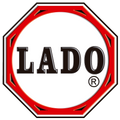So far we have made with our students thousands of stairs of strips, ascending, descending, etc. and thanks to this and other activities, they have identified that each strip has two characteristics: color and length. In other words, after many games and activities we conclude that "The same color of the ruler always corresponds to the same length."
But we are also going to see that there are rules that have fractions , small lines that divide them into 1, 2, 3 or more parts ( see here ). And using those lines we are going to ask the students the following:

How is each part? Are all the parts the same size? What does each of those parts remind you of? Doesn't it remind you of the size of the smallest ruler? The White? Then try to put under each strip all the white strips that fit... Do the white strips stick out or can you always put an exact number of white strips?
In this way the child will be arriving by discovery and not by imposition to know that each rule is an exact number of times the base rule (the white one).
Now we are going to value them.
We start with the smallest ruler, the white one, and we are going to call it One (Unit) because it only consists of one part (You will check that this ruler does not have any more lines).
We move on to the next rule by size. How many parts does the red rule have? or what is the same, how many white strips fit in the red strip? We will verify that the red rule is twice the white one and therefore we will call it the Two. The numbering of one of the faces of the LADO Rules also indicates how we represent (the spelling) of the number two (2). Since we already know that all the red rulers measure the same, we will call all the red rulers two.
The light green one is three times the white one, so it will be the Three (3), etc...
At this point of the explanation and understanding of the properties of numbers, we can alternate other games to reinforce the concept of: "Length associated with color and color associated with number."
In this way, the child will understand that we are the ones who have decided to call the white ruler unit or one, but that the unit can also be represented by other elements, such as a ball. And for this we use I learn to count .


This set of material allows us to create our ladder of numbers. It is made up of the following material: tiles that fit together with the numbers from 1 to 10 expressed in number and letter, 10 rods from smallest to largest and the right colored balls to form the ladder (with the same colors as the strips). .
We will ask the child to identify the colors of the balls: What do these colors remind you of? Are they the same as the ones on the strips? How many red balls do you have? Do you remember what we called the red strip? And how many green balls do we have? We will ask them to make groups of balls by color and to place next to them the token that indicates the number of balls there are.


Later we will invite the child to build his ladder.  If we are working with small children of 4 years or less, we can give them the structure formed (chips fitted in their order and rods placed, as you see in the image) and they are the ones to place the balls on the corresponding rod, depending on of number of balls that they have of each color.
If we are working with small children of 4 years or less, we can give them the structure formed (chips fitted in their order and rods placed, as you see in the image) and they are the ones to place the balls on the corresponding rod, depending on of number of balls that they have of each color.
If we see that the children are getting comfortable, we can leave them all the loose cards (the ones with the numbers, the written expression and the rods) so that they are the ones who assemble the ladder from scratch.
The cards have a self-correcting system that will help the child to see the order of the ladder:
 - The arrow indicates which number goes after each number in ascending order.
- The arrow indicates which number goes after each number in ascending order.
 - The dots make it easier to know if the written expression corresponds to the number.
- The dots make it easier to know if the written expression corresponds to the number.
With this exercise , the child will tend to identify the unit and the rest of the numbers with the same color as the rules but seeing that they can have different shapes. (In this case round shape).
Thanks for reading us!! Until next time.


Leave a comment